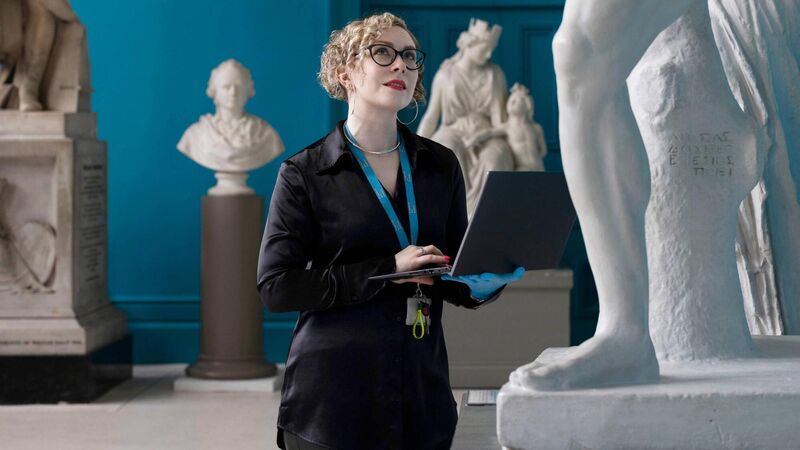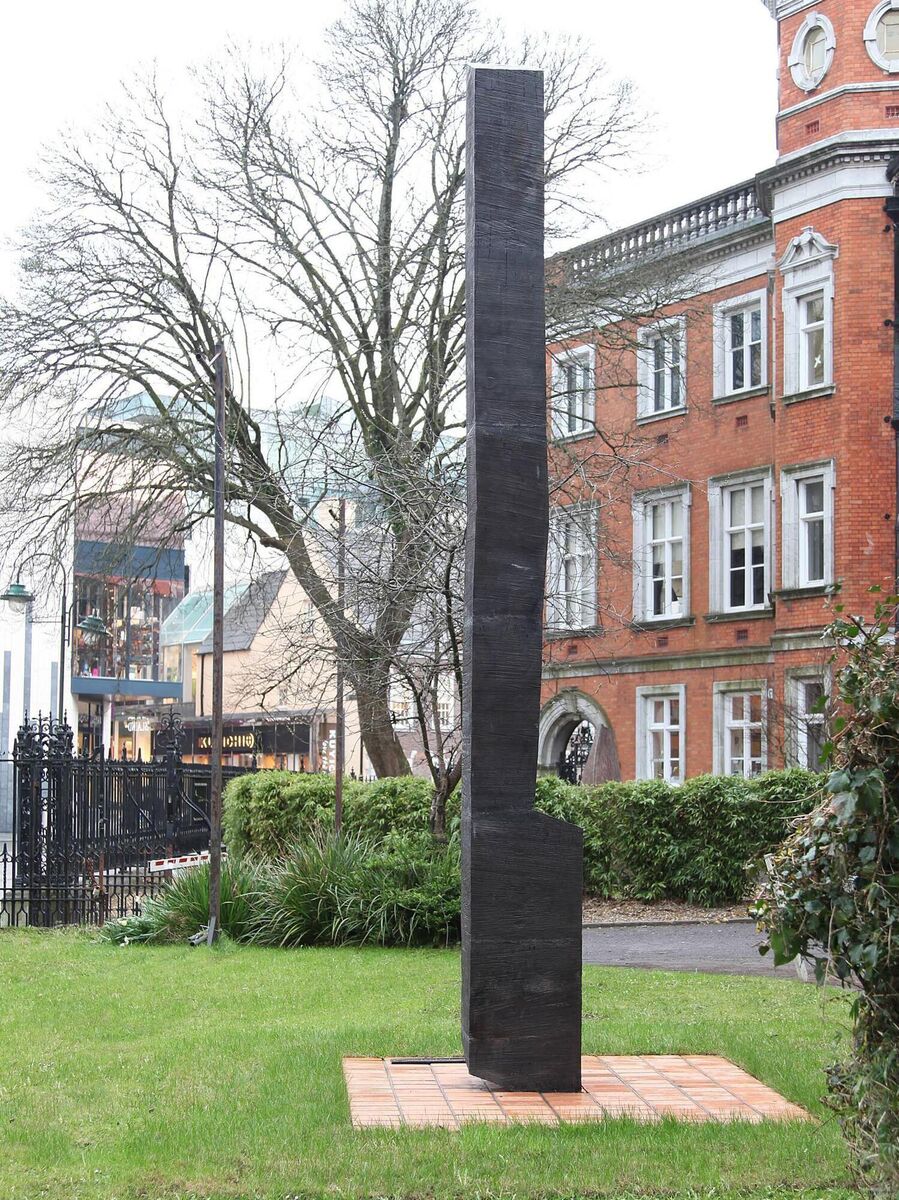Behind the scenes at Crawford in Cork: Moving precious casts, and relocating a huge sculpture

Kathryn Coughlan, production manager at Crawford Art Gallery, with some of the Canova Casts. Picture: Clare Keogh
This month: We’re at a really exciting stage in the gallery’s redevelopment, with some parts of the plan going full steam ahead and other elements that are still a bit of a waiting game.
The procurement process for a building contractor for the redevelopment of Crawford Art Gallery was announced by the Department of Tourism, Culture, Arts, Gaeltacht, Sports and Media in May. It will take nine months for this important process to be complete, so all approvals will be in place for work to begin on the building in spring 2025.
We’re also expecting to make an announcement about the gallery’s public closure date within weeks: it’s very important that our visitors know that we are open and welcoming the public to exhibitions right up until we close during the autumn.
Up until we close, the day-to-day life of the gallery goes on: we have a beautiful exhibition called From Source To Sea, charting the course of the River Lee from the Shehy Mountains to the mouth of Cork Harbour, which is running until September 22, and we are just about to hang an exhibition called Now You See It… which is a celebration of favourites from the collection.
The work of getting all the rest of the artworks moved into secure storage is now fully underway. The last few weeks have been particularly interesting as we move away from the documentation and paperwork side and into the practical packing and moving of artworks.
After months of planning and putting together schedules and sourcing transport agents and Fine Art storage suppliers, artworks have begun to be moved out of the building: the first 50 flat artworks were successfully moved in May.

The following week, UK sculptural conservators Taylor Pearce Ltd gave us the benefit of their expertise when they came to assess the precious Canova Casts and other pieces in the sculpture gallery.
Taylor Pearce are hugely experienced in their field: they were founded in 1986 and have worked with institutions including the Tate, the Imperial War Museum and the National Gallery of London.
The Canova Casts are arguably the heart of the Crawford collection, so taking them off their plinths and crating them and moving them offsite is a challenge. They are so well-known and loved. It was really interesting and informative for our team to get advice on methods of packing and storage for some of our sculptural works.
Crating sculptures In early June, we got to implement some of that advice when we removed plaster originals from the gallery’s Half Moon St window: if you walk past that window now, you might notice that the display there has changed.
We worked with our local sculpture specialists to remove seven works from their plinths and crate them.
Crating involves bracing the sculptures in so they are supported and protected from knocks or falls during movement, and the crate also provides a microclimate for them while they are in storage.
Those sculptures are now safely in storage and will be visited by our conservator Chiara Chillè as part of our care of the collection while Crawford Art Gallery is closed to the public.

The next big challenge I am planning for is the removal of the tallest artwork in Crawford Art Gallery’s collection.
Abstract sculptor Michael Warren’s Obelisk of Bronze was made in 1987-88, and was presented to the state as part of the AIB Art Collection in 2012: it can been seen in the gallery garden outside the Custom House wing at Emmet Place.
It’s five metres high and moving it is going to be a pretty extensive operation.
Even though it’s outside the building, we still need to move it to protect it during the redevelopment works which will include a redesign of the garden area where it now stands.
The top of this vast sculpture actually comes off, and there is a fixing inside this top section that will allow the upright piece of the sculpture to be lifted off the armature in the ground. It will have to be carefully laid onto a flat-bed truck to be removed. The section in the ground will also have to be removed, including the bricks underneath, which were chosen by the artist at the time of its installation in the garden.
It’s quite daunting to consider everything we have to get out of the building before the redevelopment can begin: not only all of the artworks, but the contents of the library, the furniture. But I think we’re all really looking forward to the gallery reopening with artworks on display in state-of-the-art conditions, conserved and looking their best.






